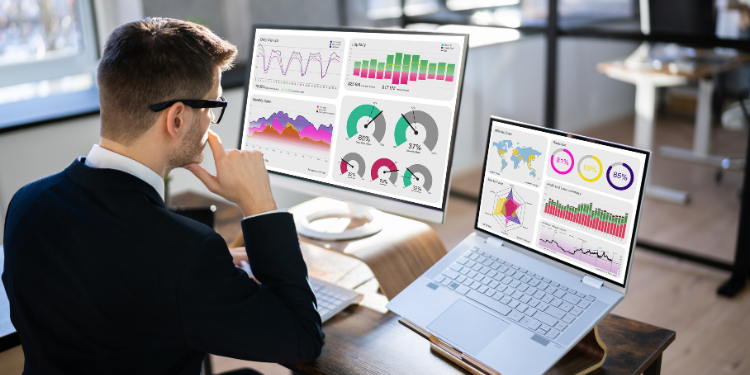In today’s digital age, businesses are constantly striving to improve their website conversion rates. After all, a higher conversion rate means more customers and ultimately, more revenue. One effective way to understand how users are interacting with your website is by using heatmaps and user behavior tools. In this blog, we will dive into the world of behavioral analytics and how it can help you optimize your website for better conversions.
What are Heatmaps?
Heatmaps are graphical representations of data that use color-coding to represent different values. In the context of website analytics, heatmaps show where users click, scroll, and move their mouse on a webpage. This allows you to visualize user behavior and identify areas of interest or friction on your website.
There are three types of heatmaps commonly used in website analytics:
- Click heatmaps: These show where users click on a webpage, and the areas with the highest number of clicks are represented by warmer colors.
- Scroll heatmaps: These show how far down a webpage users scroll. Warmer colors indicate the most frequently viewed sections of a page.
- Mouse movement heatmaps: These track user mouse movements on a webpage, allowing you to see where users hover or spend the most time.
What Are User Behavior Tools?
User behavior tools go beyond heatmaps to offer session recordings, funnel analysis, form analytics, and more. These tools help you understand:
- How users navigate through your website
- Where they drop off in the conversion process
- Which elements confuse or distract them
Why Understanding User Behavior Matters
Understanding your visitors’ behavior is key to improving your website’s user experience (UX) and ultimately, your conversion rate. Here’s why:
- Identify Conversion Bottlenecks: Discover areas where users lose interest or encounter friction.
- Enhance Content Placement: Ensure important CTAs (calls to action) are placed where users are most engaged.
- A/B Testing Insights: Inform your design experiments with actual user behavior data.
- Improve Navigation: Detect if users are getting lost or clicking on non-clickable elements.
By leveraging heatmaps and user behavior tools, you can replace guesswork with evidence-based optimization.
How to Use Heatmaps and User Behavior Tools Effectively
To effectively use heatmaps and user behavior tools, follow these steps:
1. Set Clear Conversion Goals
Before you begin tracking user behavior, define what a “conversion” means for your website. Is it a form submission? A purchase? A newsletter signup? Clarifying your goals helps you evaluate the effectiveness of each page.
2. Choose the Right Tool
Some popular tools include:
- Hotjar: Great for heatmaps, session recordings, and feedback polls.
- Crazy Egg: Offers scrollmaps and A/B testing.
- Microsoft Clarity: Free tool with heatmaps and session replays.
- FullStory: Powerful behavioral analytics with advanced filtering.
Choose a tool that matches your budget and business needs.
3. Analyze Heatmap Data
Start by reviewing click heatmaps on key pages like your homepage, product page, and landing pages. Look for:
- Click distractions: Are users clicking on non-clickable items?
- CTA performance: Are your buttons being noticed and clicked?
- Dead zones: Areas receiving no attention at all.
Use scroll heatmaps to see how far users scroll. If important content is below the average fold, consider moving it higher.
4. Watch Session Recordings
Session recordings let you see how real users interact with your website in real-time. This can help uncover:
- Confusing menus or navigation structures
- Errors users encounter
- Rage clicks or rapid back-and-forth movement (signs of frustration)
These insights provide actionable feedback on how to improve usability.
5. Use Funnel Analysis
Many behavior tools offer funnel reports. These show you how many users move from one step to another in your conversion path. For example, if 1,000 people visit your landing page, but only 50 complete the form, you may need to:
- Simplify the form fields
- Improve the CTA
- Add social proof or testimonials
Final Thoughts
Using heatmaps and user behavior tools is one of the smartest ways to identify what’s working (and what’s not) on your website. Instead of relying on assumptions or outdated design trends, you can tap into real user data to make strategic decisions that drive conversions.
Whether you’re a startup or an established business, these tools provide you with the visibility needed to continuously improve user experience and ROI.
Ready to Turn Visitor Data into Results?
At Strzec, we specialize in designing data-driven websites that convert. From layout optimization to ongoing UX analysis, our team helps you use tools like heatmaps and behavior tracking for long-term success. Contact us at info@strzec.com or call us on (877) 767-7711 to learn how we can boost your website’s performance today.







